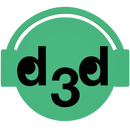kate G.- May 05 2024
Elegoo Neptune 4 / 4 Pro Review

Introducing the Neptune 4 and Neptune 4 Pro, two fast and affordable 3D printers that deliver impressive printing results. These new additions to the Elegoo Neptune lineup in 2023 offer remarkable features at budget-friendly prices. Starting at just $259 for the Neptune 4 and $299 for the Neptune 4 Pro, these printers are perfect for beginners venturing into 3D printing or enthusiasts looking to expand their printing capabilities. Despite their low cost, both models are packed with advanced features that ensure high-quality prints. Whether you're just starting out or looking to upgrade your printing setup, the Neptune 4 and Neptune 4 Pro offer excellent value and performance.
Assebmly & Initial Setup
With these printers, some assembly is required, but it's quick and straightforward. In fact, the assembling the Neptune 4 and 4 Pro can be finished in 15-20 minutes.
When setting up the printer, there're a few key steps to check to ensure optimal performance:
1. Tighten the nozzle:
Before installing the print head, it's recommended to tighten the nozzle.
2. Check belt tension:
Check all belts for proper tension: belts should have some flex when pushed, neither too soft nor too rigid.
3. Fixed heatbed:
Ensure the bed doesn't wobble on the X / Y axis. If you have a loose heatbed, check the distance between the two sides of rails and adjust as needed.
Neptune 4 / 4 Pro Features
Both Neptune 4 and 4 Pro feature dual-gear direct drive extruders with dual fans and longer nozzles aimed at improving filament flow. Notably, the printers come equipped with a significant set of 4 fans at the back to ensure adequate air circulation during high-speed printing, although this results in considerable noise. However, a toggle switch allows users to turn off the fans when not printing at high speeds to reduce noise levels.

Other notable features include dual Z rods for stability, a user-friendly touchscreen interface, belt tensioners for X and Y axis, filament run-out sensor, and dual sets of LED lights for improved visibility. Additionally, the printers boast auto mesh bed leveling and adjustable knobs for precise bed leveling. For file loading, users have multiple options including USB, micro SD, and USB-C ports, although Wi-Fi connectivity and a built-in camera are absent. Nevertheless, it's possible to remotely monitor the printers via the Klipper web interface using a USB webcam.

Klipper Firmware
Despite their modest size, these bed Slinger 3D printers boast a build volume of 225x225x265mm, allowing for impressive print speeds. This is partly due to the inclusion of Klipper, a firmware that provides greater control over the printer and print settings. If you're new to working with Klipper, Elegoo offers a user-friendly starting point with pre-configured settings for these machines. However, for those who wish to fine-tune Neptune 4, 4 Pro printers further, you could also optimize these printers using Klipper.
Neptune 4 VS. Neptune 4 Pro
The main difference between the Neptune 4 and Neptune 4 Pro lies in their features. The Pro version is equipped with smooth rods for the extruder, enhancing printing smoothness. Additionally, it boasts a zoned heated bed, allowing users to heat only the necessary portion of the build plate for smaller prints, rather than the entire surface. This feature contributes to more efficient printing and energy usage. Moreover, while both printers offer fast FDM printing, the Neptune 4 Pro comes at a slightly higher price point of $299 compared to the Neptune 4, priced at $259.
| Neptune 4 | Neptune 4 Pro | |
|---|---|---|
| Device size | 475x445x515mm(without spool holder) | |
| Net Weight | 8.3kg | 8.9kg |
| Build Volume | 225 x 225 x 265 mm | |
| Main Differences | 500 mm/s Print Speed |
Two Heated Bed Areas (100W + 150 W) |
| 300 °C High-Temp Printing | Metal Guide Rollers | |
| Powerful Cooling | Metal Top-Beam | |
| Firmware | Klipper | |
| Print Speed | max. 500 mm/s | |
| Recommended: 250–300 mm/s | ||
| Mainboard | 64-bit 1.5G Quad-Core Silent (8G Storage Space) | |
| Extruder | Direct Drive Extruder with Dual-Drive-Gear | |
| max. Print Temperature | 300 °C | |
| max. Heated Bed Temperature | 110 °C | |
| Build Plate | Magnetic PEI-Spring Steel | |
| Levelling | 2.0 Automatic Levelling over 121 Points | |
| Cooling | 2 x 4015 Fans + 4 x 4020 Fans (3 Modes: mute, normal, violent) | |
| Guide Rollers | POM | Metal |
| Display | 4.3-Inch removable, Capacitive Colour Display | |
| Z-Axis | Dual | |
| Connectivity | WLAN (optional), USB | |
| LED Light | Yes | |
| LAN Printing | Yes | |
| Filament Sensor | Yes | |
| Resume Printing | Yes | |
| XY-Belt Tensioner | Yes | |
| Vibration Damping | Yes | |
Print Test
Neptune 4 and 4 Pro utilized the Elegoo version of Cura, which comes pre-installed with the printers and has a preset profile. The default print speed is set to 250mm/s, but the printers are capable of reaching speeds up to 500mm/s. However, I recommend sticking to around 250mm/s or even slightly lower to maintain print quality. Despite this, I've been thoroughly impressed with the print quality achieved, particularly evident in the 18-minute Benchy prints produced by these machines.
18min Benchy


Kunai Print in Place

